Shizuoka is a port city located about an hour outside of Tokyo. It is known for its views of Mt. Fuji, its fresh seafood, and its tea plantations – in fact, 40% of the tea produced in Japan comes from Shizuoka Prefecture. As I found out when I visited, Shizuoka is a worthwhile destination for tea- and adventure-lovers everywhere.
Shizuoka has a long history of hospitality that dates back more than 400 years, to the creation of the Tokaido highway that runs through the city. The Tokaido (“Eastern Sea Route”) was a major travel and trade route that connected the former capital of Kyoto, in western Japan, to the new capital of Edo (now Tokyo) in eastern Japan. Post towns and teahouses were established along this route to provide travelers with lodging, refreshments, and supplies. Shizuoka marked the approximate halfway point between Edo and Kyoto, and all six of the city’s former post towns remain today.
I took part in a one-night, two-day guided tour to experience the best of Shizuoka’s past and present. The trip package included a bike tour of Shizuoka, an overnight stay in one of Nihon Iro’s rustic Japanese villas, a stand up paddleboarding (SUP) lesson at Mochimune Beach, and a tea tasting hosted by the owner of Moriuchi Tea Farm.
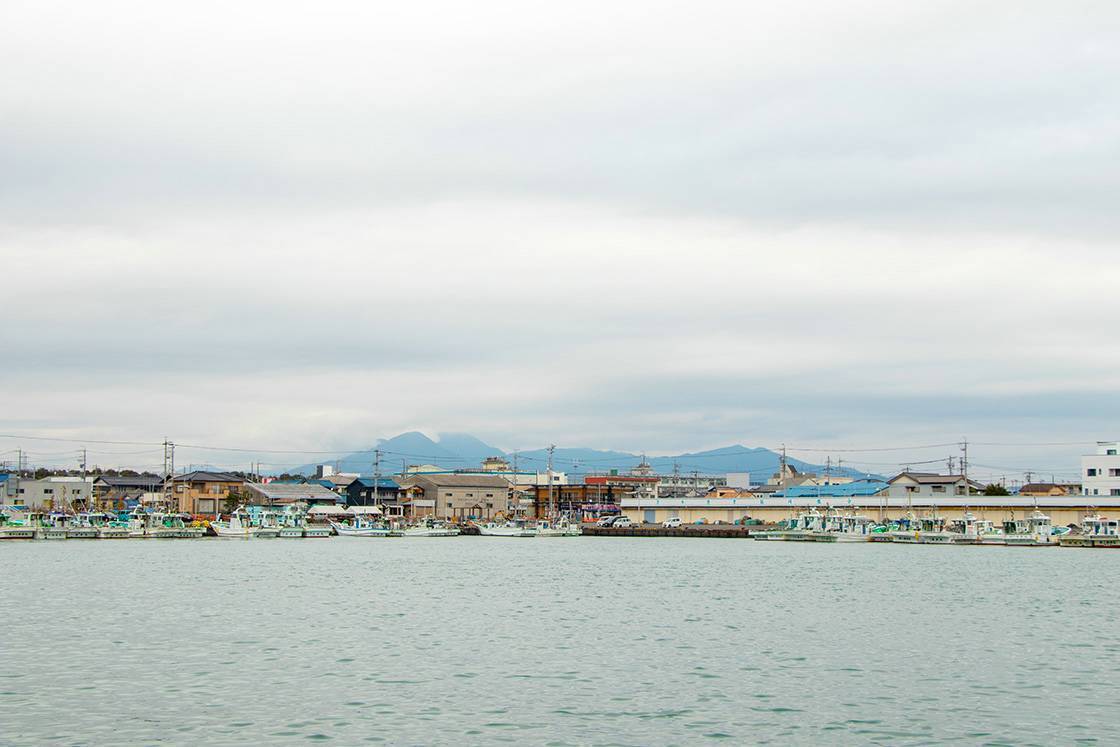
Day 1: Guided Cycling Tour
My first day consisted of a guided bike tour that led across Shizuoka, to the Tokaido highway in the city’s westernmost limits, and back again. The entire route takes around four hours, depending on skill level, experience, and number of stops. For example, experienced cyclists may choose to bike to Mochimune, whereas more casual cyclists (like me) may choose to travel there by train instead.
I arrived in Shizuoka by bullet train and was greeted at the station by the local guides who accompanied me throughout my trip. I was then equipped with a bike and helmet before we hit the road. Our route followed the historic Tokaido highway through the post town of Mariko and on to the rest station near Utsunoya Pass, from where we cycled back across the Abe River to visit the magnificent Shizuoka Sengen Shrine.
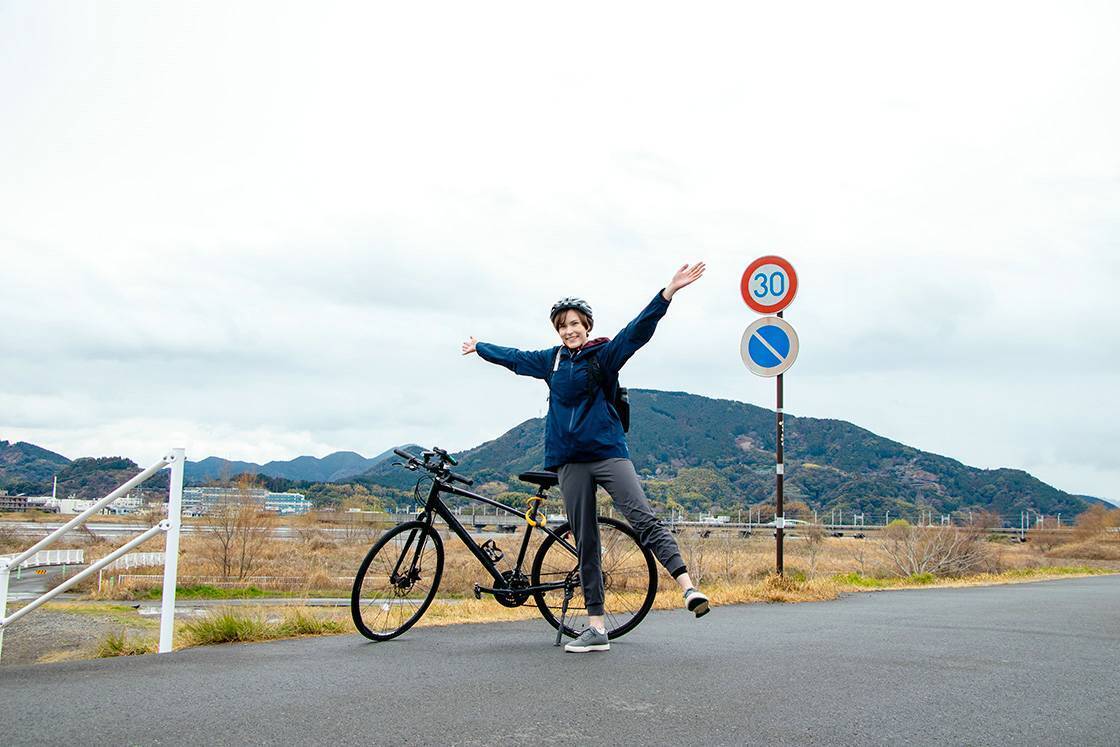
The Historic Tokaido Highway
Setting out from Shizuoka Station, I traveled across the Abe River to western Shizuoka, where modern roads converge with the Tokaido highway at Kesho Bridge. From Kesho Bridge, I biked along the Mariko River down a path lined with cherry trees, citrus trees, and vegetable gardens. Considering the proximity to urban Shizuoka, I was amazed at how quiet it was. I heard only the sounds of the stream, our bikes on the pavement, and polite greetings from the residents as I cycled by.
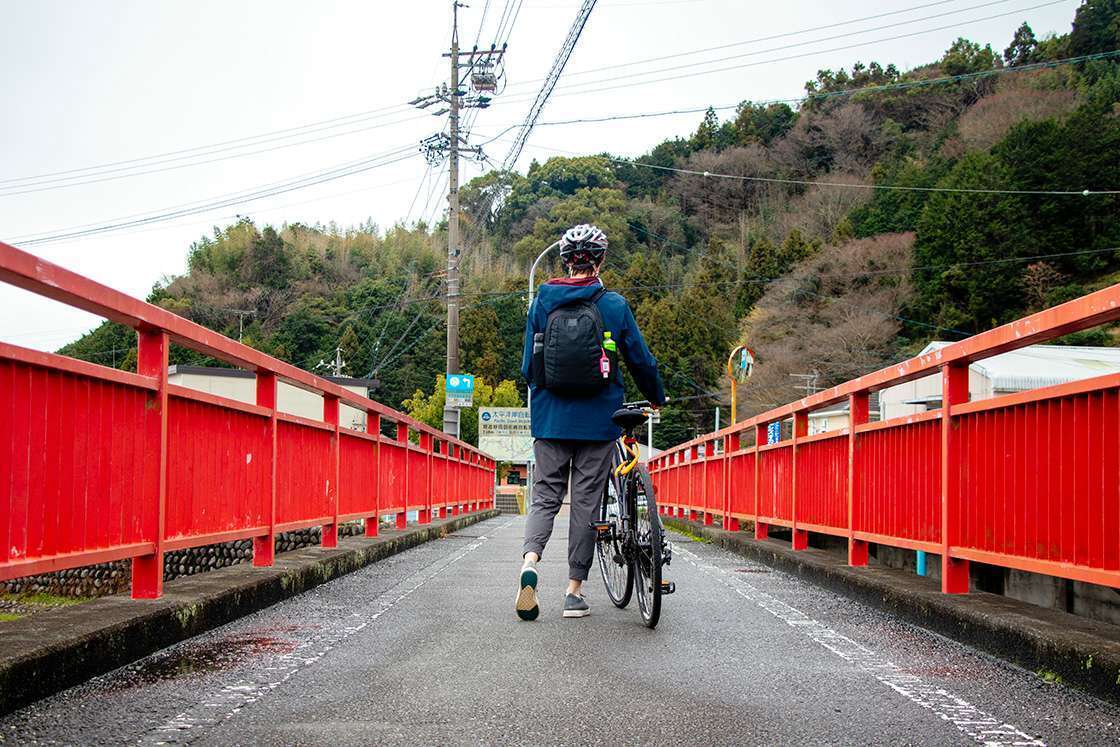
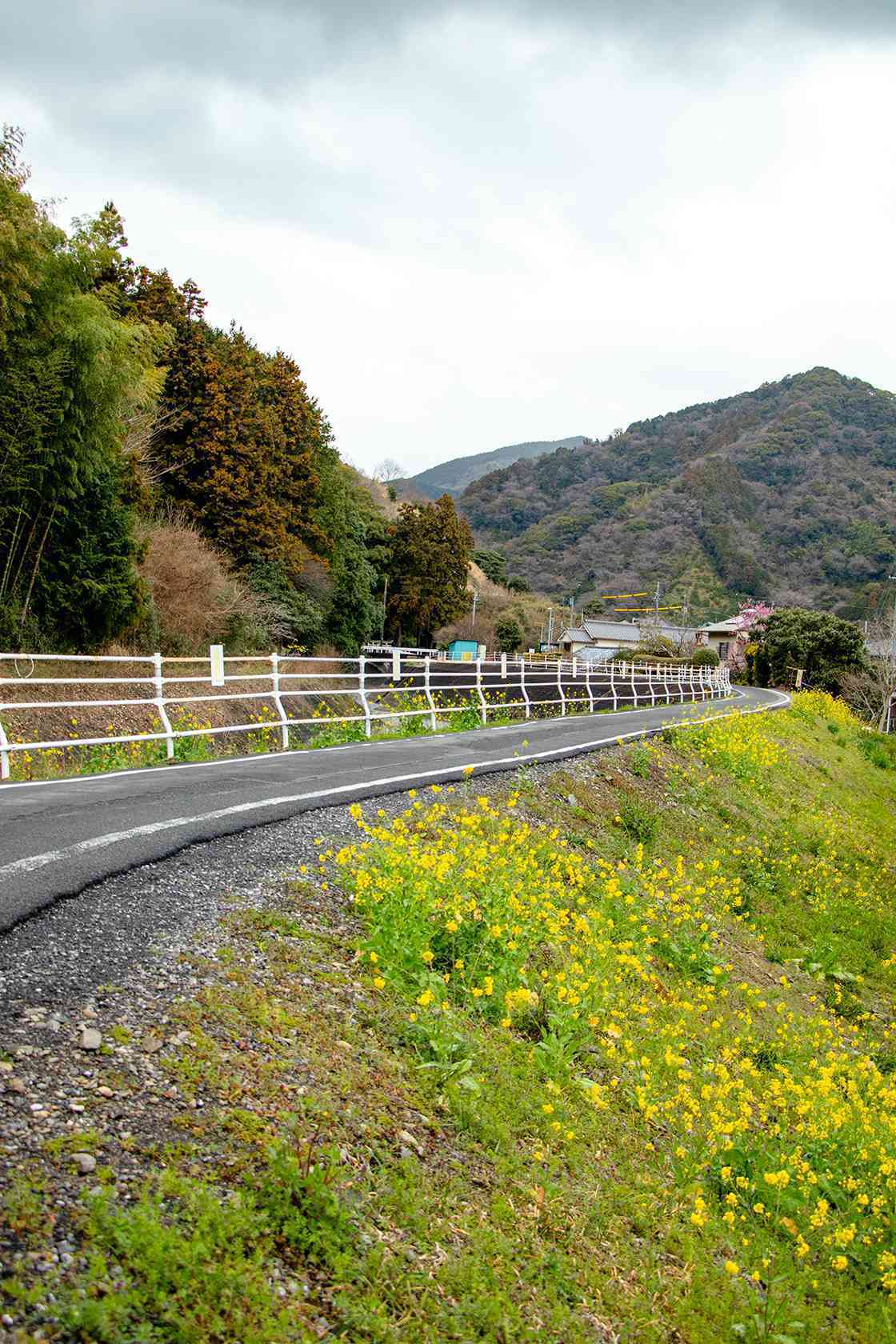
I also stumbled across a quintessential small-town sight: unmanned produce stands. These stands rely on the honor system to sell excess fresh fruit and vegetables harvested from nearby family gardens or farmers’ fields, reducing food waste.
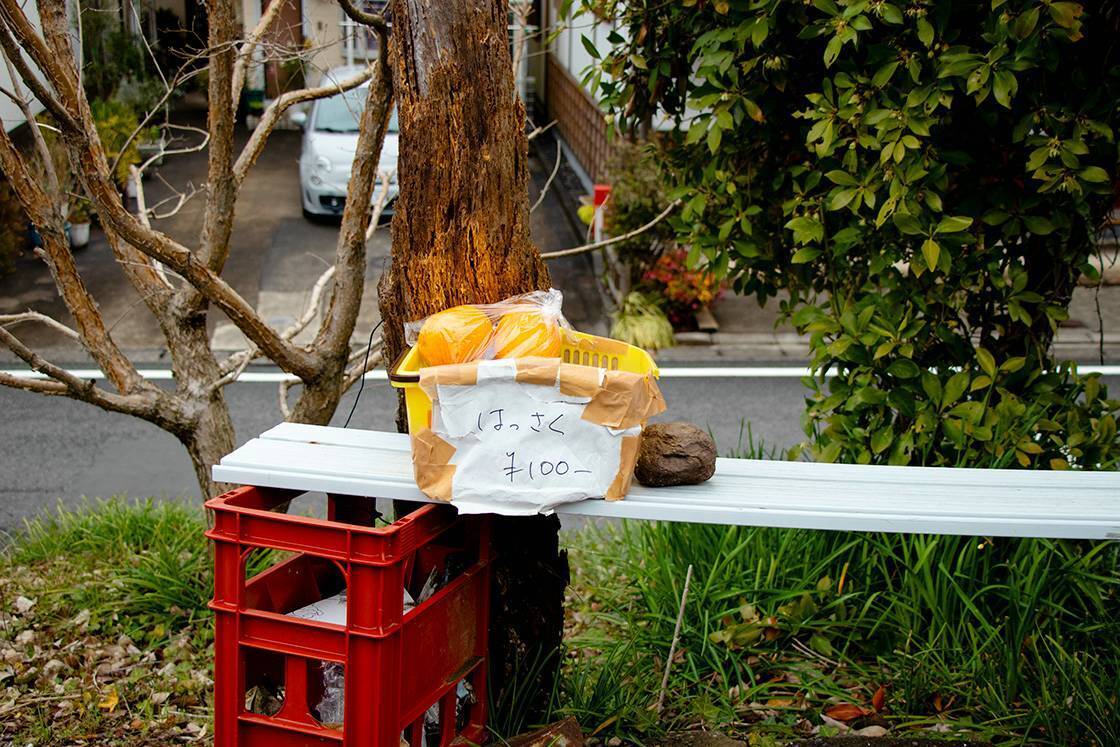
Farther up the Mariko River, I visited Chojiya, the oldest restaurant in Shizuoka Prefecture. It was established in 1596 as a teahouse that welcomed travelers to Mariko Station on the Tokaido highway. Its fourteenth-generation owner, Shibayama-san, gave me a tour of the building. Chojiya is best known for its grated wild yam on barley rice (tororo-jiru), which the haiku master Matsuo Basho praised in one of his poems. The restaurant also appears in countless 17th- and 18th-century travelogues, essays, and ukiyo-e prints, some of which are displayed inside the restaurant.
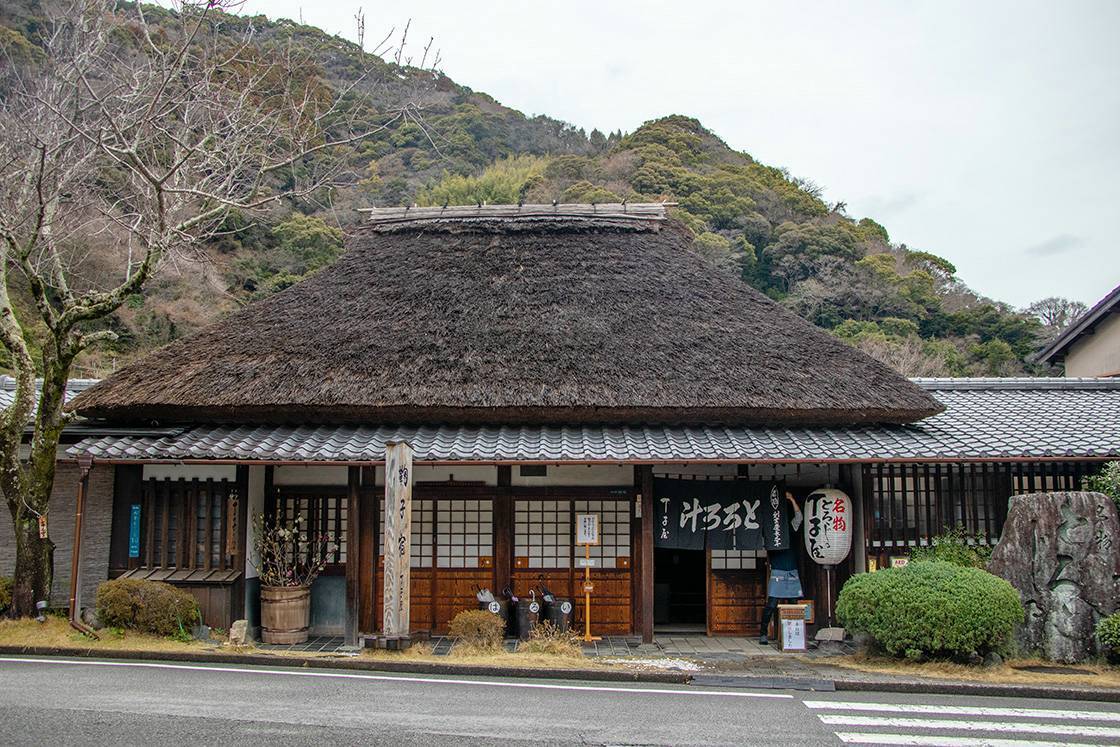
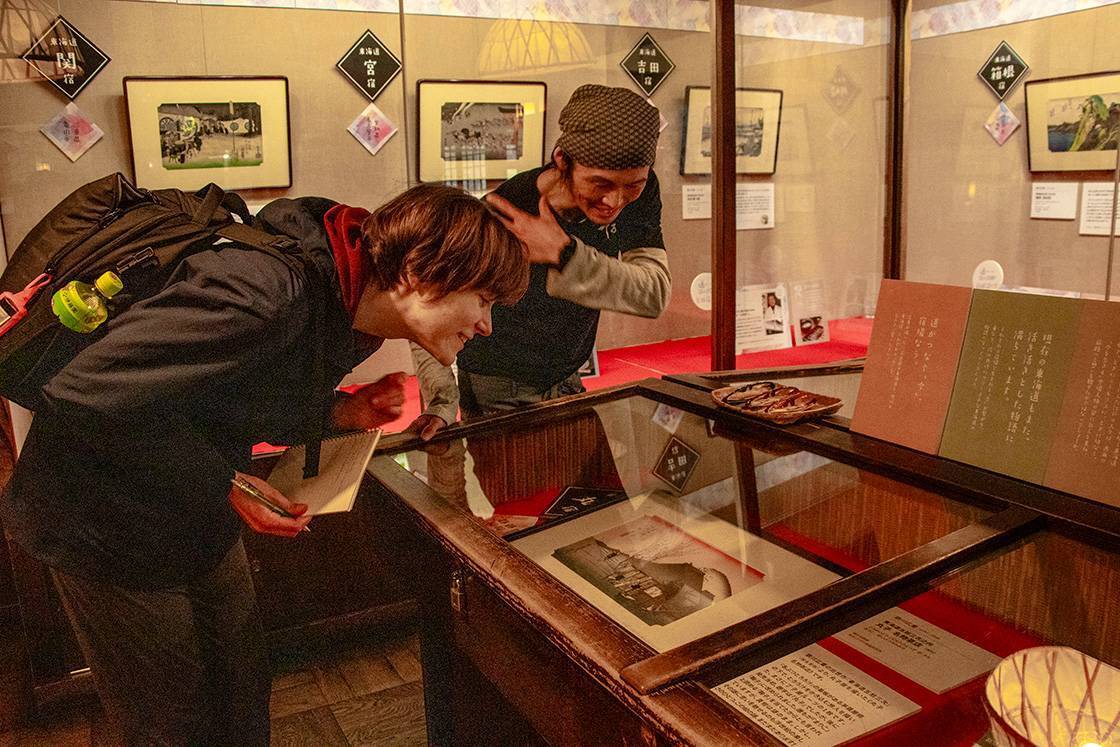
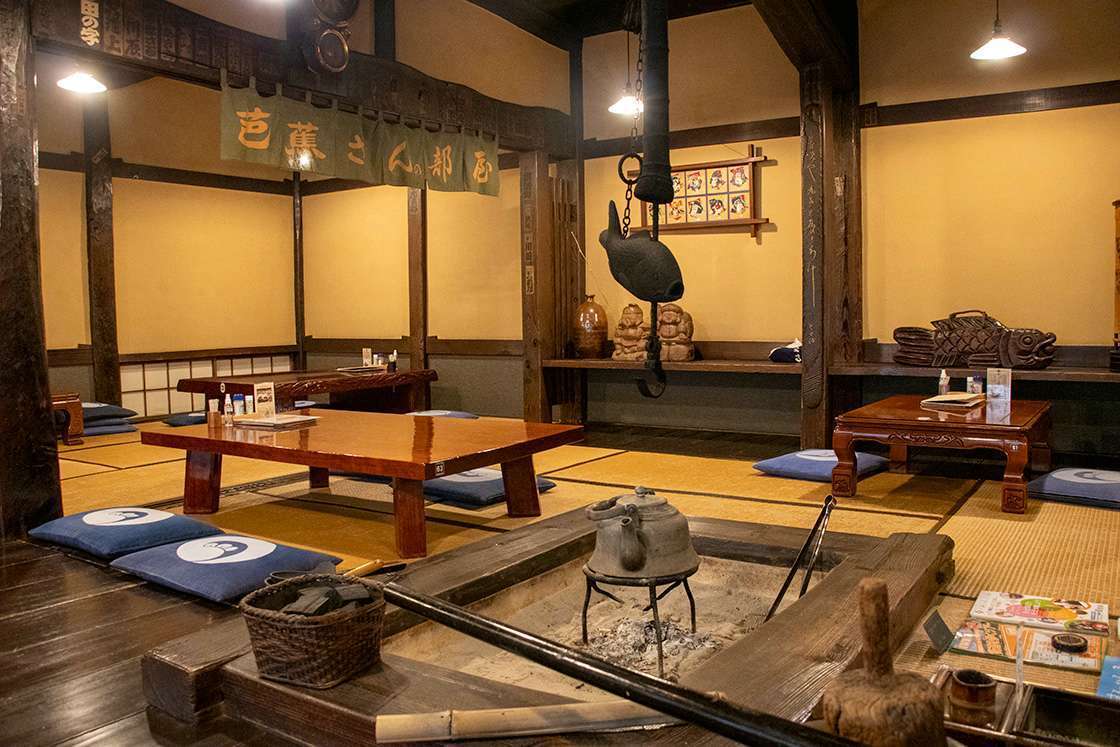
From Chojiya, I followed the Tokaido highway to the mid-station, or ai-no-shuku, at the eastern foot of Utsunoya Pass. This de facto post town was where travelers prepared to cross the infamously dark, steep, and narrow Utsunoya Pass. The townscape retains its historical appearance, and it is easy to imagine the couriers, samurai lords with their accompanying entourages, and other travelers who used to frequent the teahouses and stores of this rest stop on the Tokaido highway.
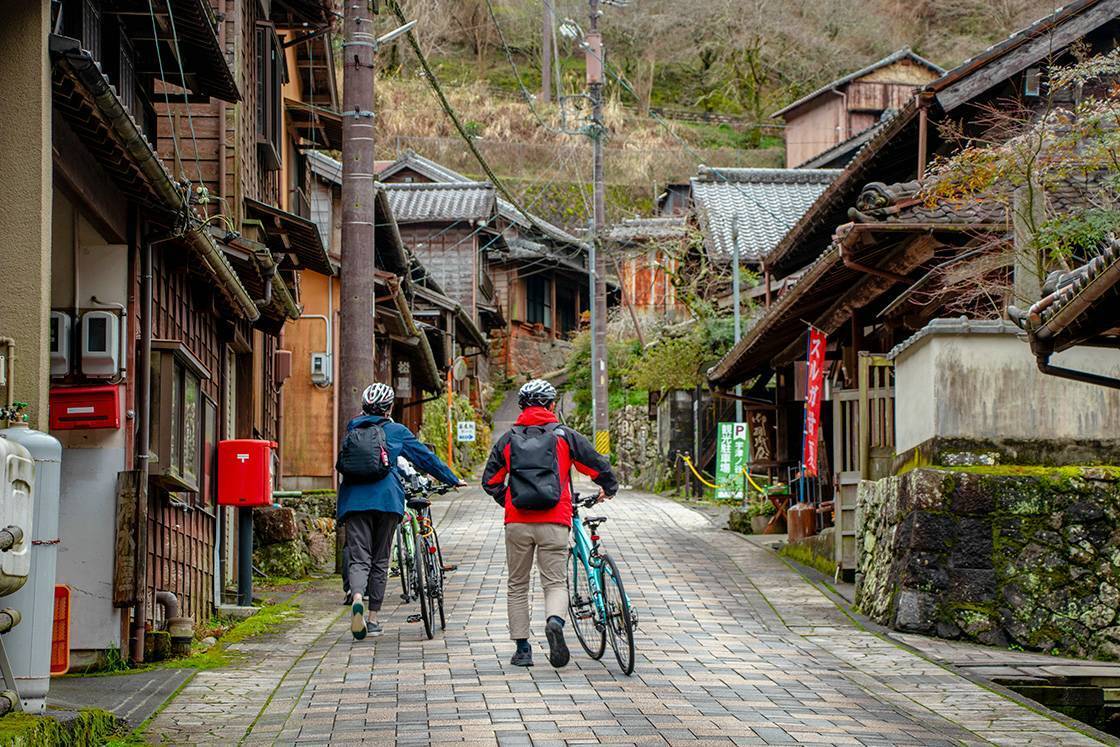
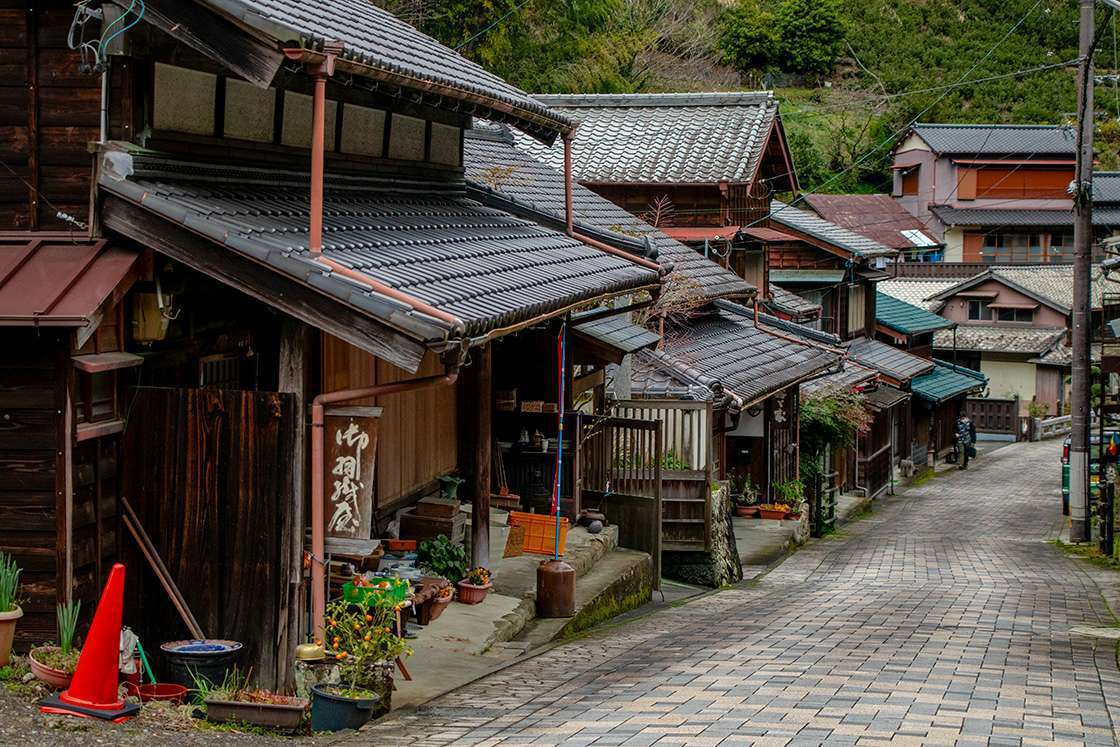
At the southern end of the mid-station is Meiji Tunnel, a brick tunnel named for the historical era (Meiji) it was built in. Meiji Tunnel was constructed in the early Meiji period (c. 1876) and was the first toll tunnel in the country. It has made the journey through Utsunoya Pass much safer.
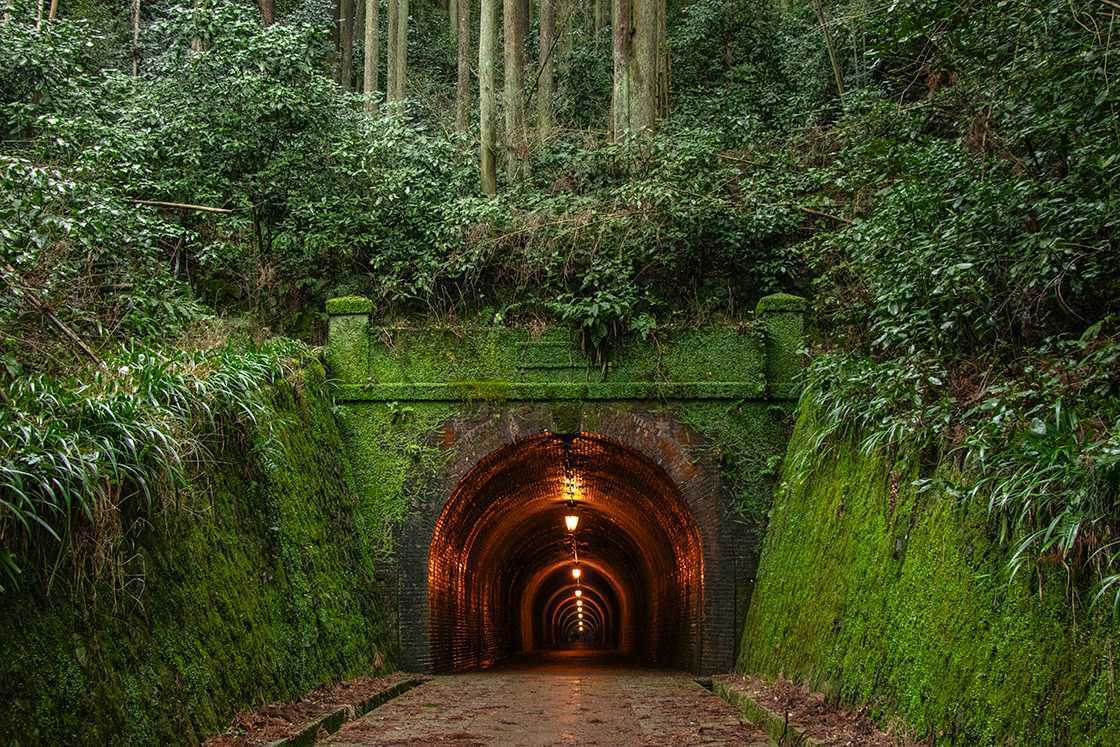
After walking my bike through Meiji Tunnel, I cycled back to the entrance of the mid-station via Taisho Tunnel. I then crossed back to central Shizuoka via the Abe River Bridge, a bowstring truss bridge that was completed in 1923. At 491 meters, it is the longest of its kind in Japan and was made using steel imported from England.
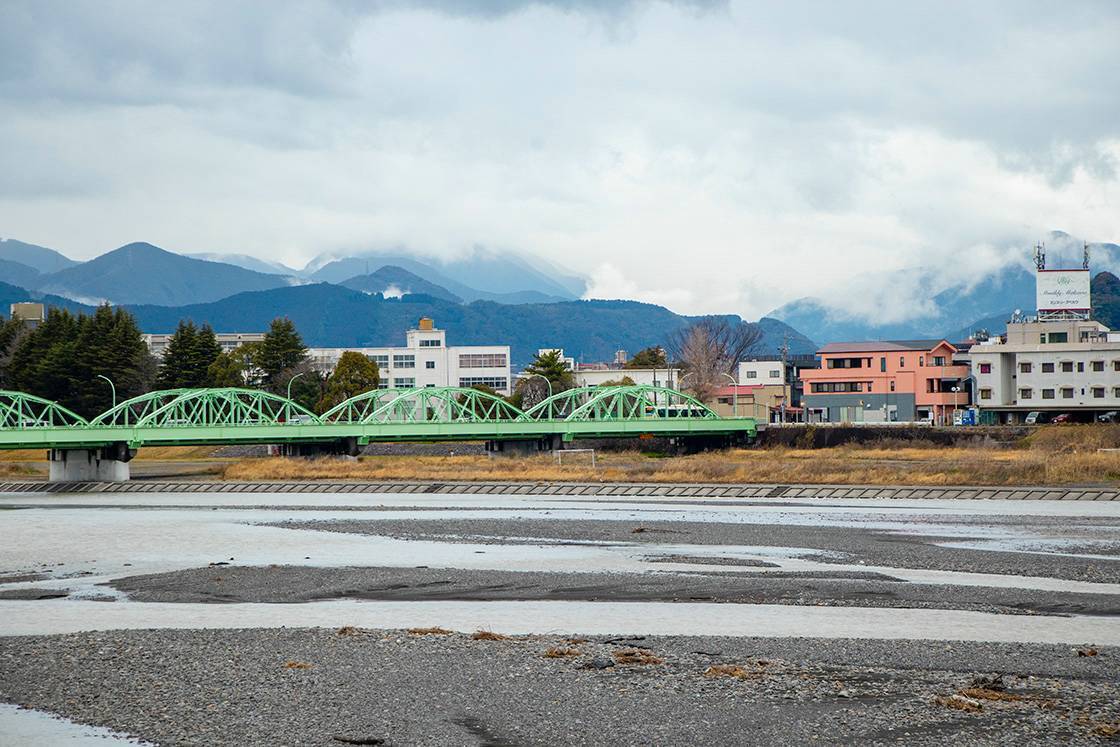
From there, I headed towards my final stop: Shizuoka Sengen Shrine. Shizuoka Sengen Shrine was the head shrine of the former Suruga province (now Shizuoka Prefecture) and is famous as the site where Tokugawa Ieyasu, the general who would later unify Japan under the Tokugawa shogunate, had his coming-of-age ceremony. The 45,000-square-meter precincts house eight different shrines, the oldest of which was established over 2,000 years ago. I walked around the shrine precincts for a while, admiring its shiny red lacquer work and intricate wood carvings, before I paid my respects and purchased a goshuin seal as a record of my visit.
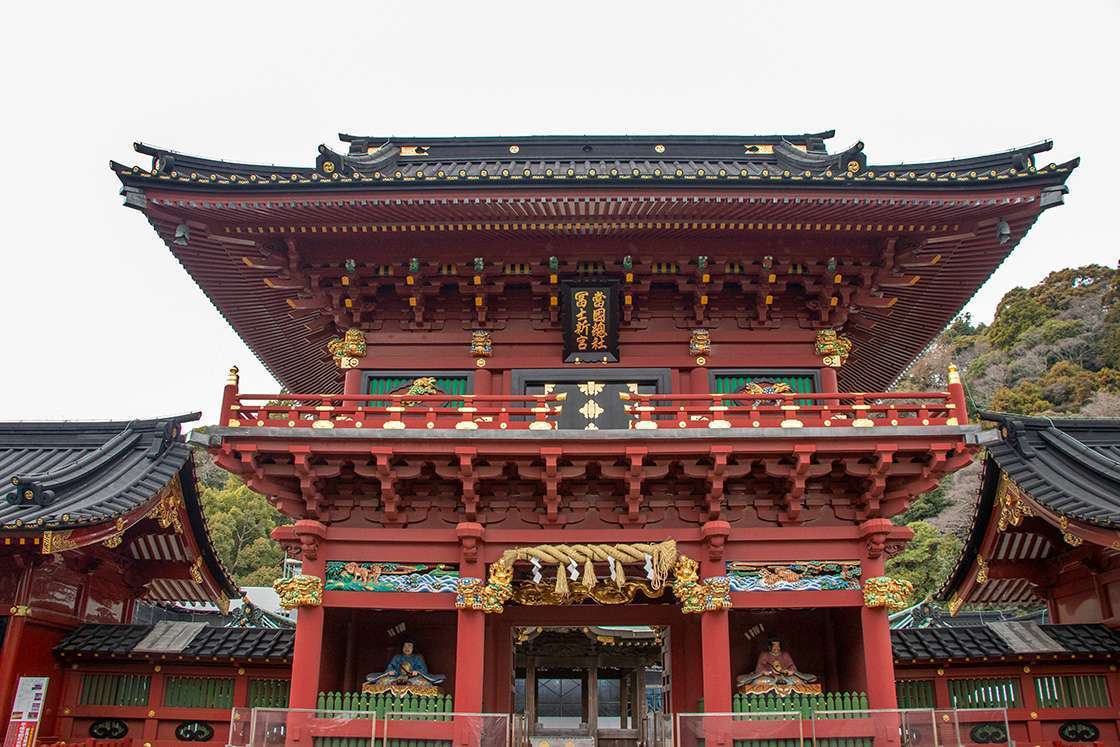
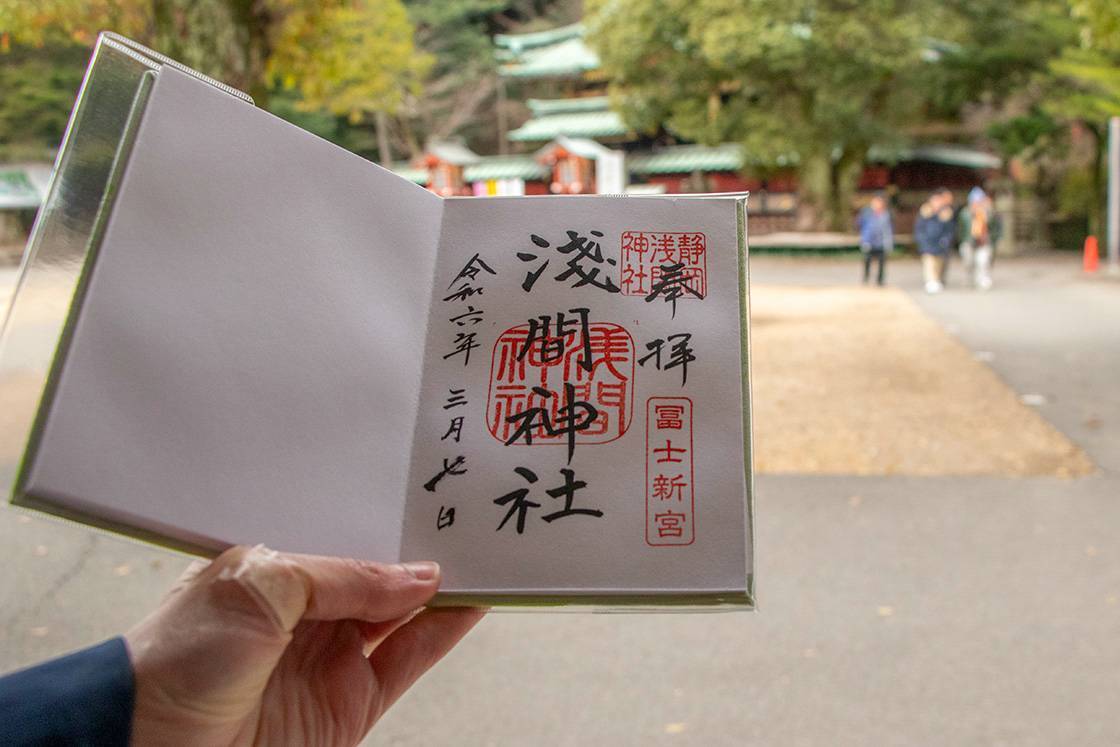
Note: Shizuoka Sengen Shrine is currently undergoing restoration work, so sections of the shrine may be covered in scaffolding depending on the time of your visit.
I then pedaled back to Shizuoka Station and traveled by train to Mochimune, where I spent the night in a private villa. The Nihon Iro staff welcomed me at Mochimune Station and drove me to my accommodations in a tuk-tuk auto rickshaw.
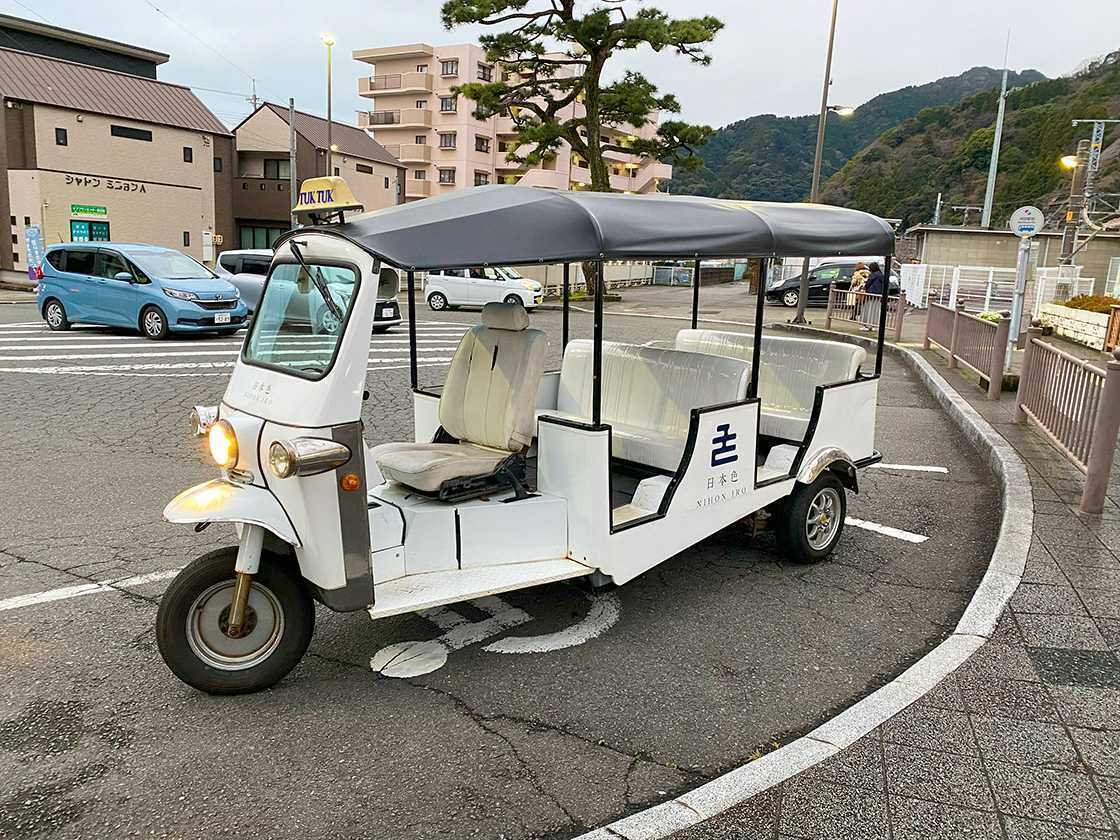
Nihon Iro consists of various traditional kominka houses and koya boat huts that have been renovated and repurposed as private villas. Each unit has a completely unique layout and is named after a different traditional Japanese color. I stayed in Chigusa (a shade of light teal), a renovated kominka house. The main living space and bedroom are surrounded by gardens on three sides that are framed by picture windows, and the high ceilings, windows, and spacious tatami rooms come together to create a relaxing retreat for up to four guests. Amenities included a built-in irori hearth and free access to the nearby Mochimune Port Spa hot springs.
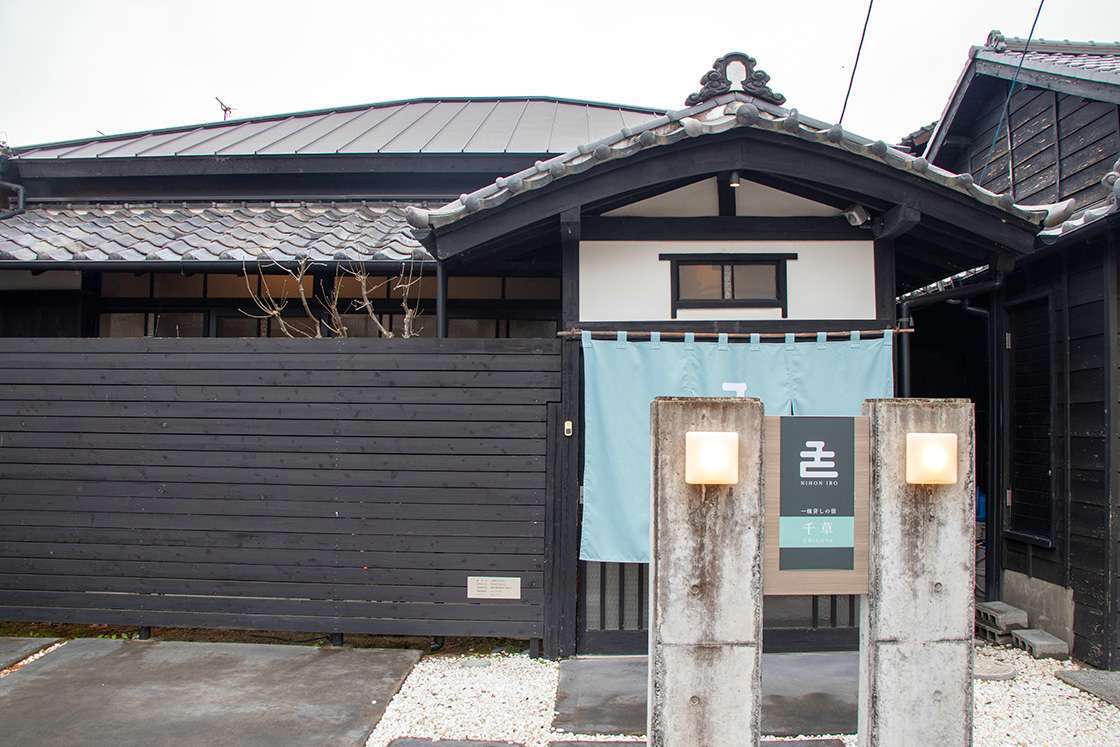
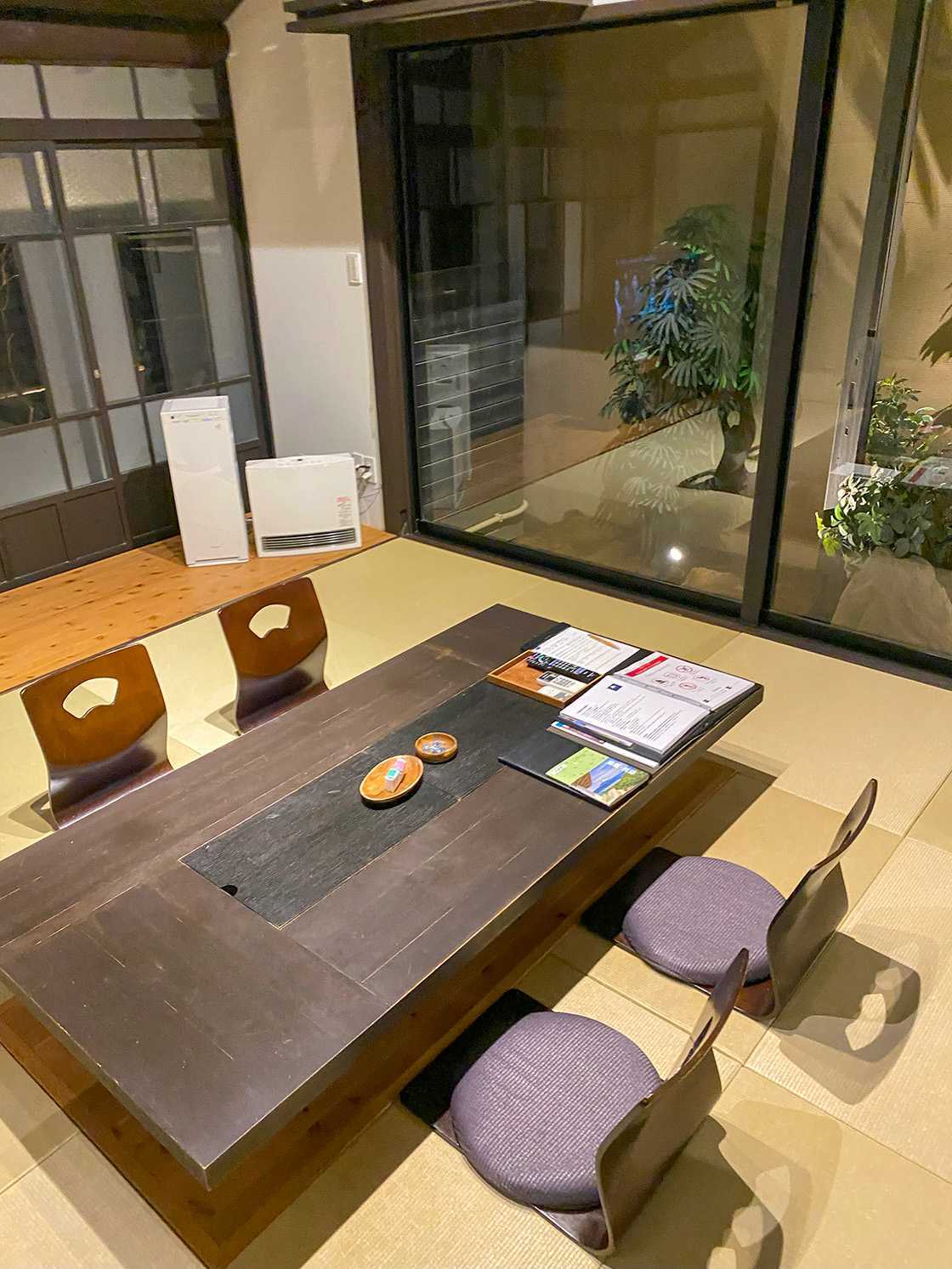
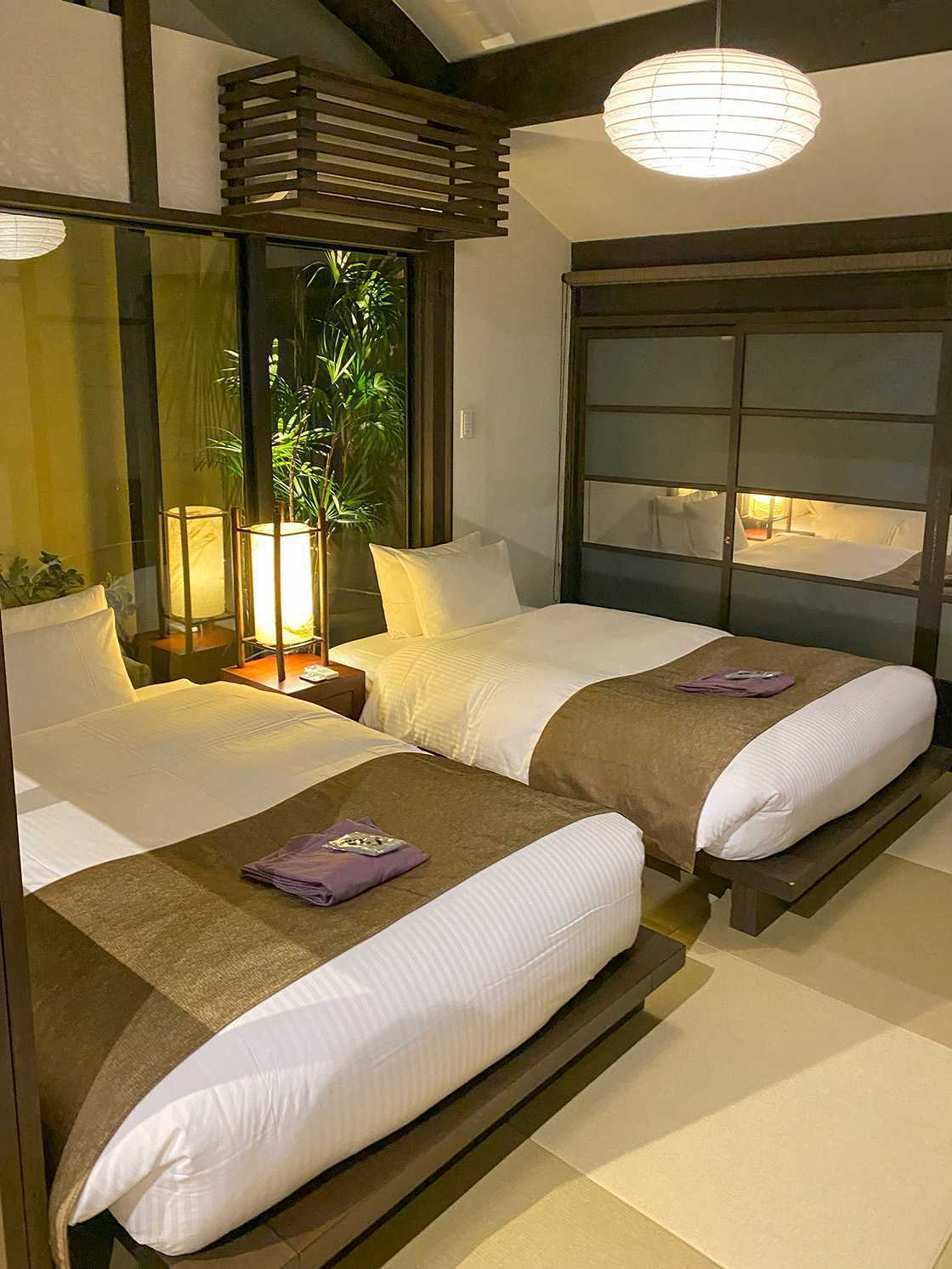
Around dinner time, the Nihon Iro staff brought lit charcoal to my room and set up the fire so I could grill food with the irori. Although guests are free to purchase their own ingredients, I chose a prepared set of meat, vegetables, and fish sourced from nearby fisheries, farmers, and grocers. Eating delicious food and relaxing around the fire was a great way to end a tiring but very rewarding day.
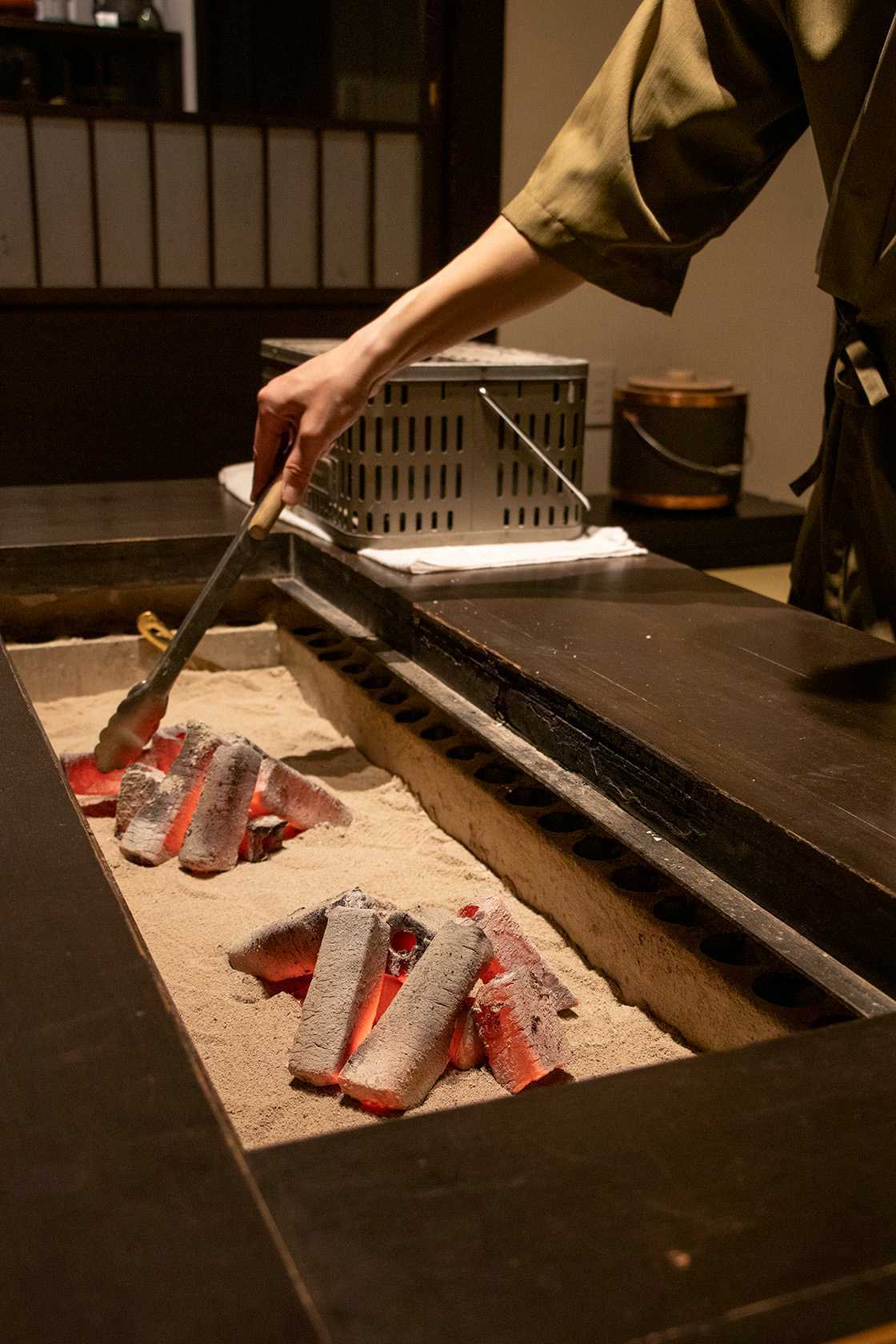
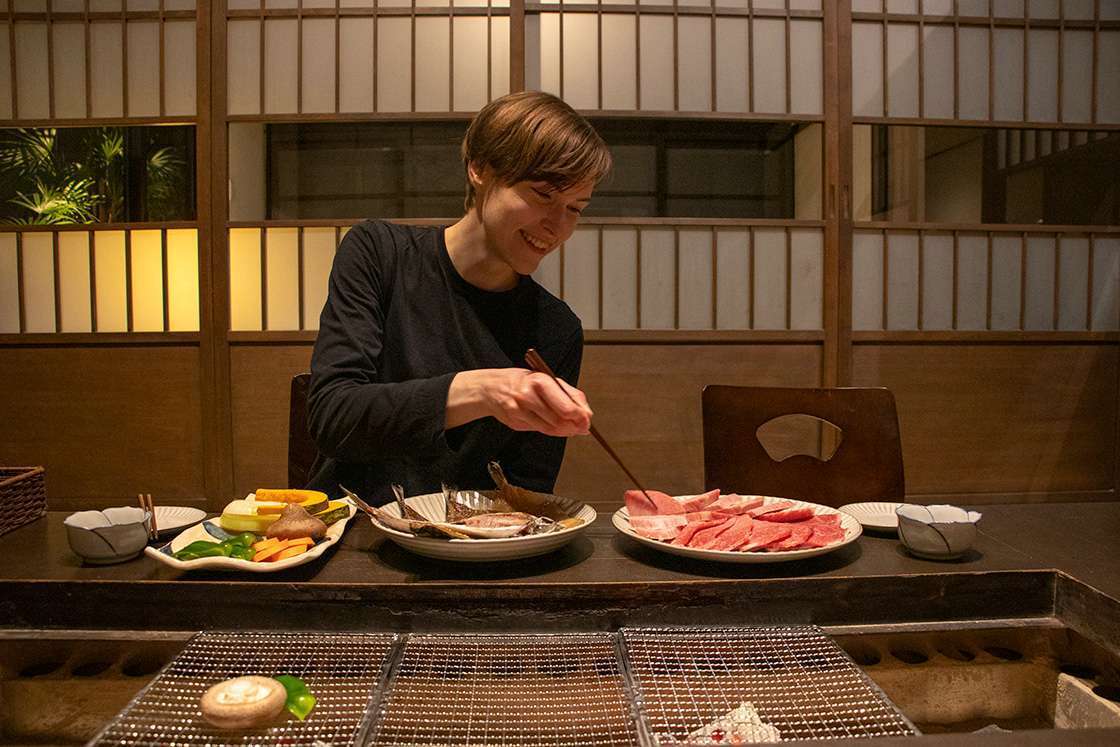
Day 2: SUP and Tea Tasting
The following morning, I woke up bright and early to get ready for the second day’s itinerary: stand up paddleboarding and tea tasting. A “hospitality mom” from the local community visited my villa to prepare a traditional Japanese-style breakfast for me. Once the meal was ready, she explained what each dish was, how it was prepared, and what ingredients were regional specialties. Needless to say, each dish was delicious and made with love.
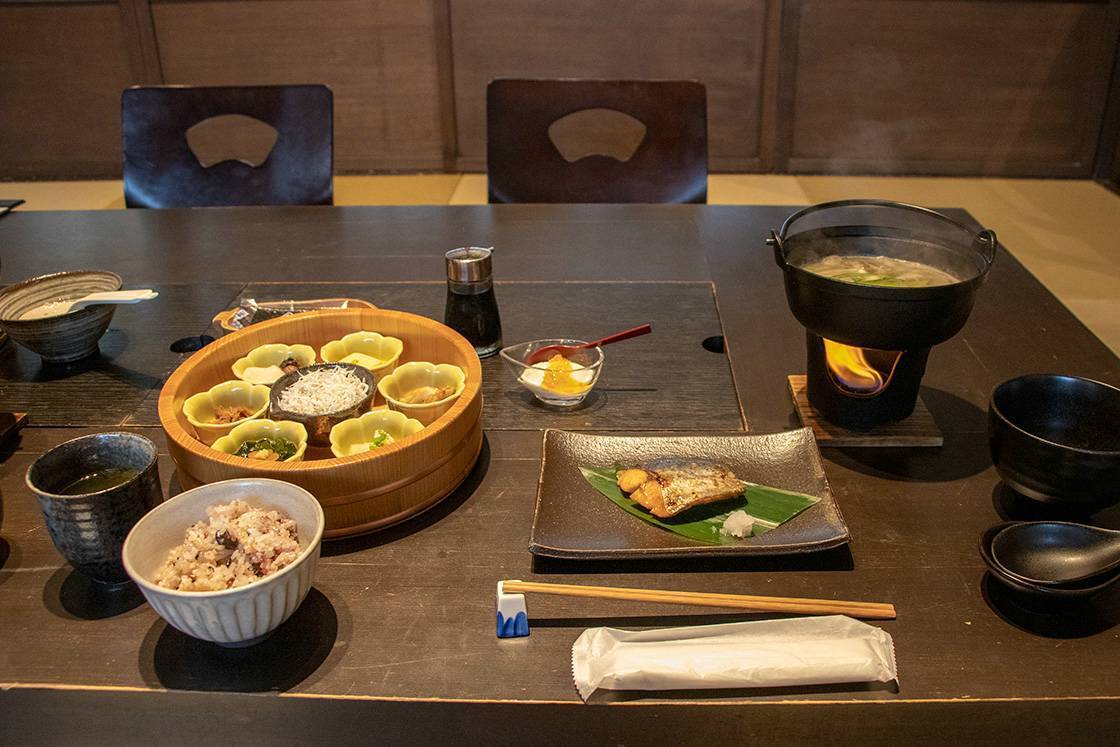
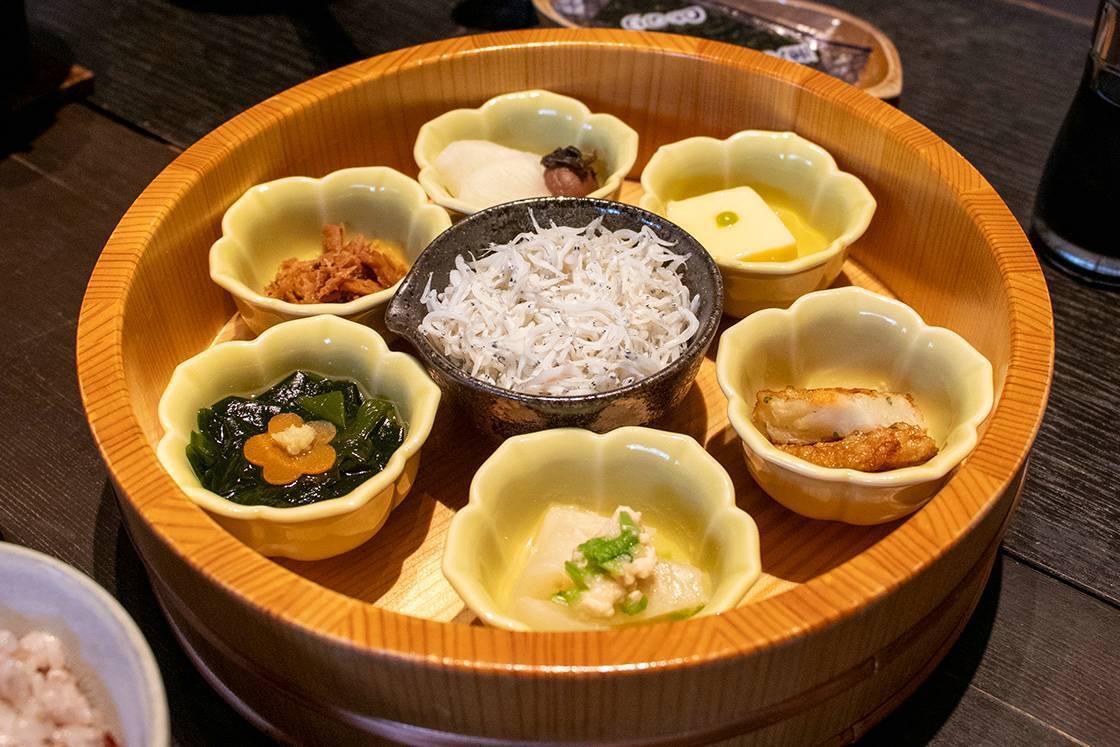
Adventure on the Sea
After checking out of the hotel, I walked down Mochimune Beach to Club Sarry’s Sports & Cafe for my SUP session. Club Sarry’s is a fitness club and cafe run by the Nishina family that offers SUP lessons, rentals, and other fitness activities such as Nordic walking, trail running, and yoga. SUP’s current form originates in Hawaii, but it has begun to gain popularity in Japan as a beginner-friendly alternative to surfing.
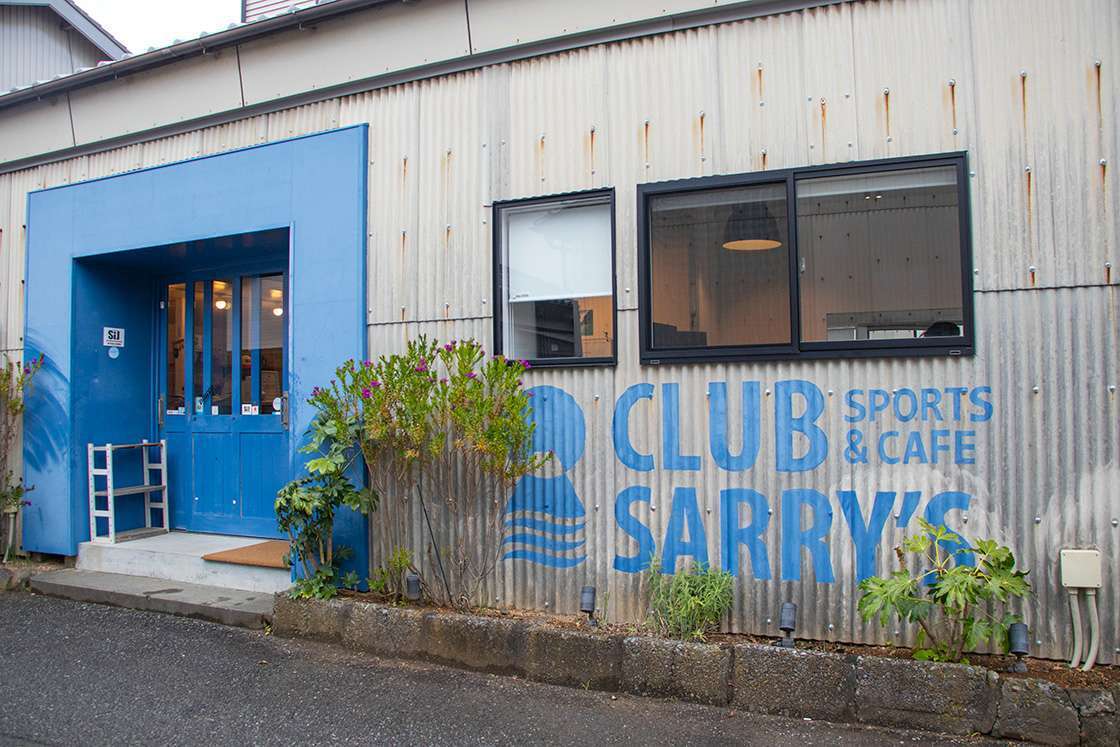
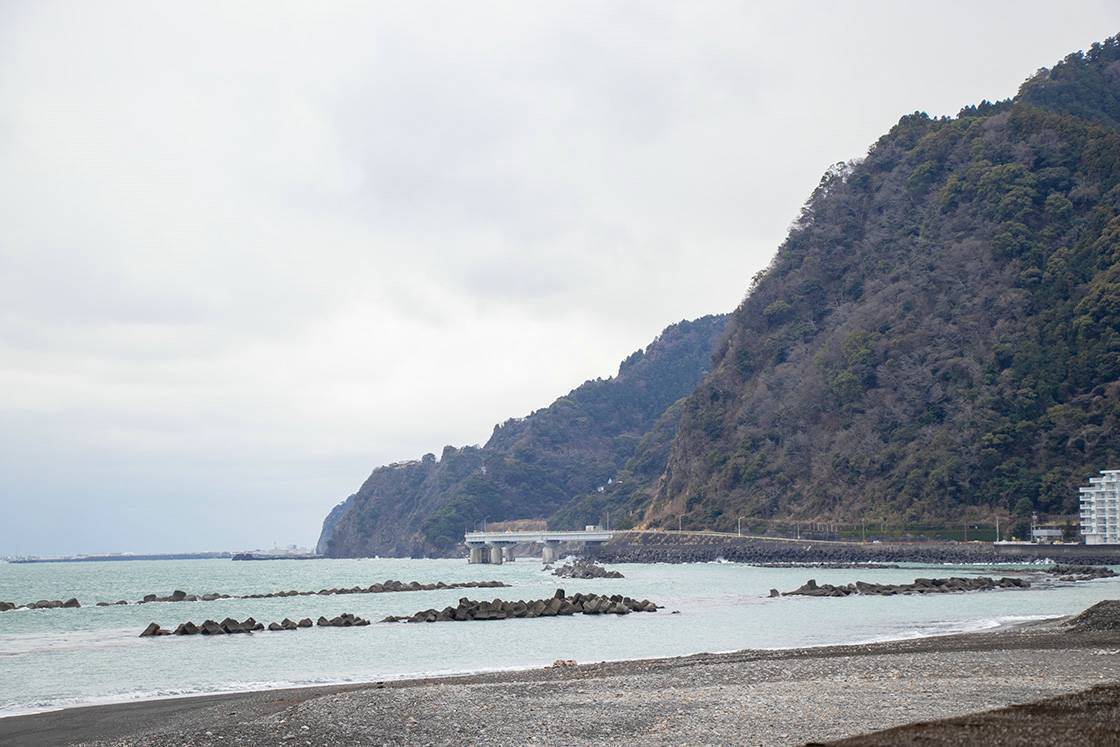
Fully outfitted in a wetsuit and life jacket, I was debriefed on safety instructions, the current weather and sea conditions, and how to properly use the paddle and steer the board. Then, together with the Nishina family, I headed out into the water.
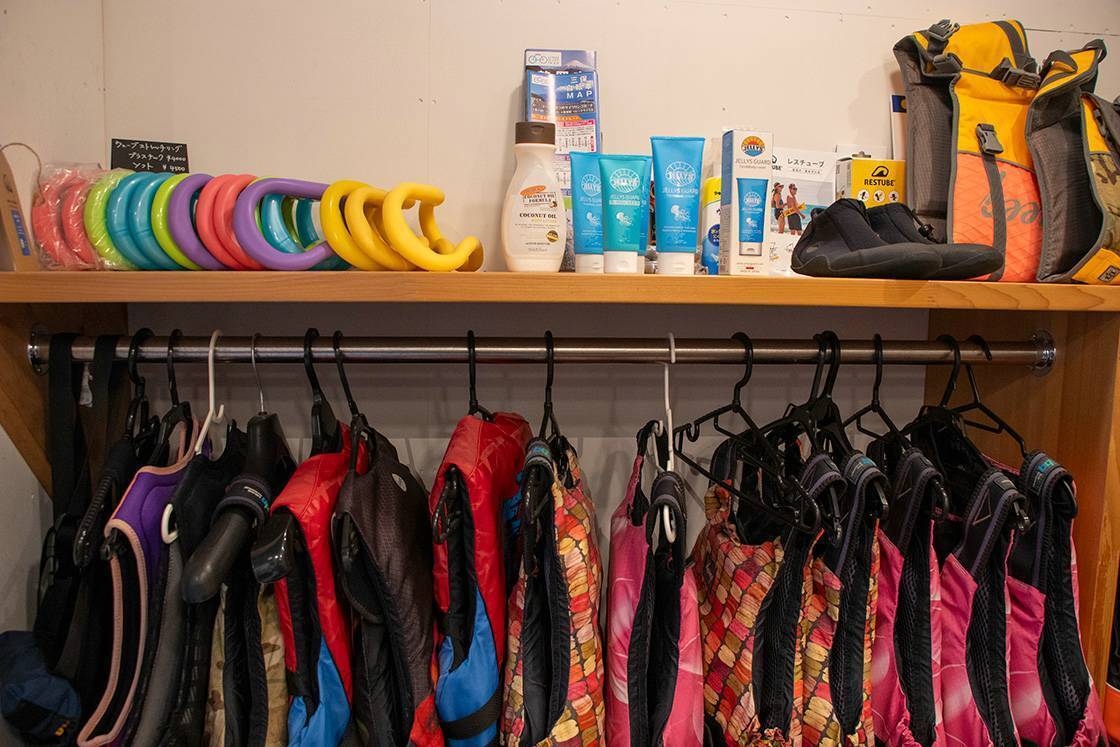
My instructors helped ease me out into the water and paddled alongside me, helping direct me, teaching me how to stand on the board, and correcting my form. By the end of the session, I started to get my water legs and found I had an easier time staying balanced on the waves. At one point, I fell off the board in spectacular slow-motion fashion, but quickly got back up on my feet. I had a lot of fun and time quickly flew by.
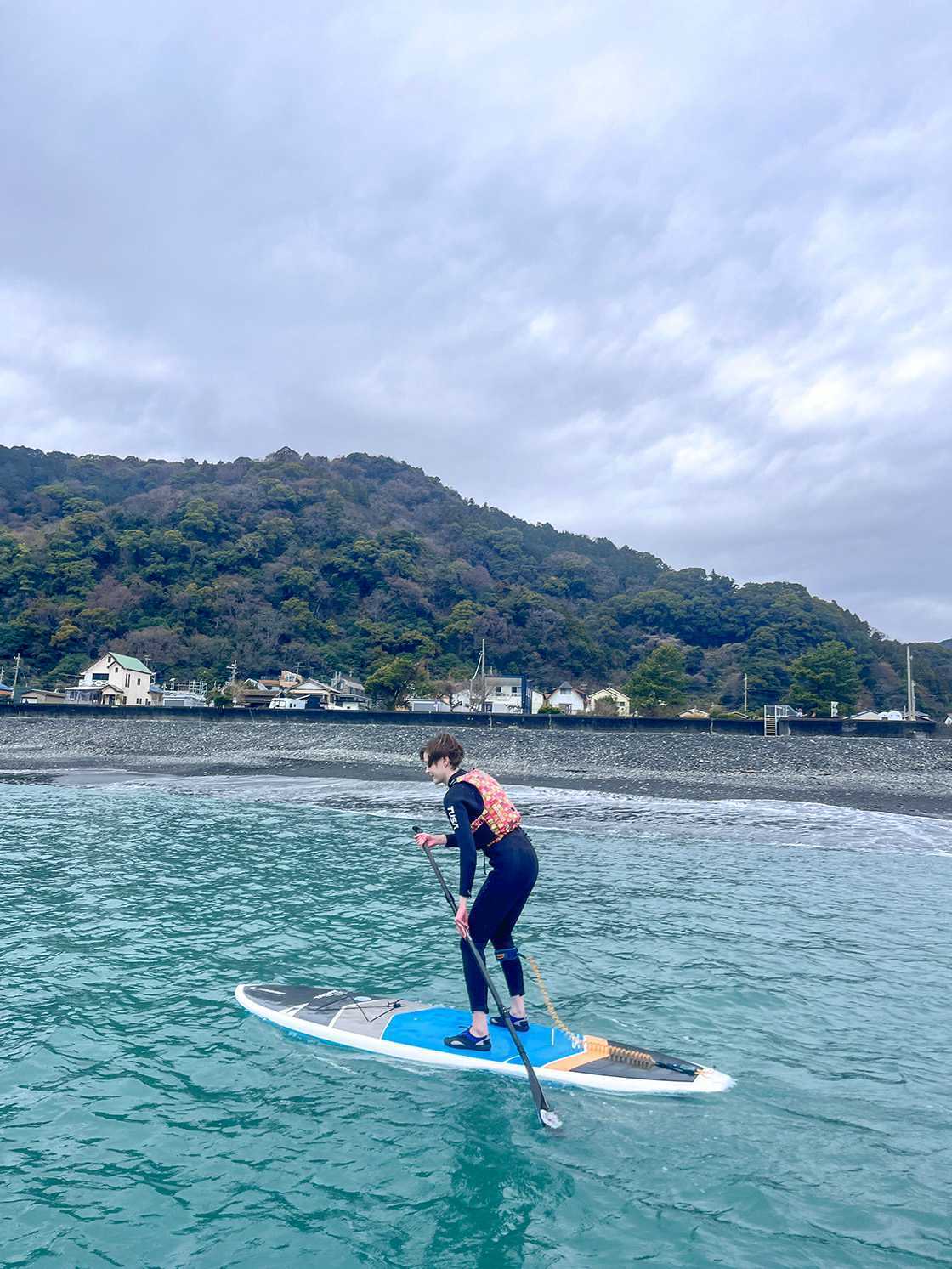
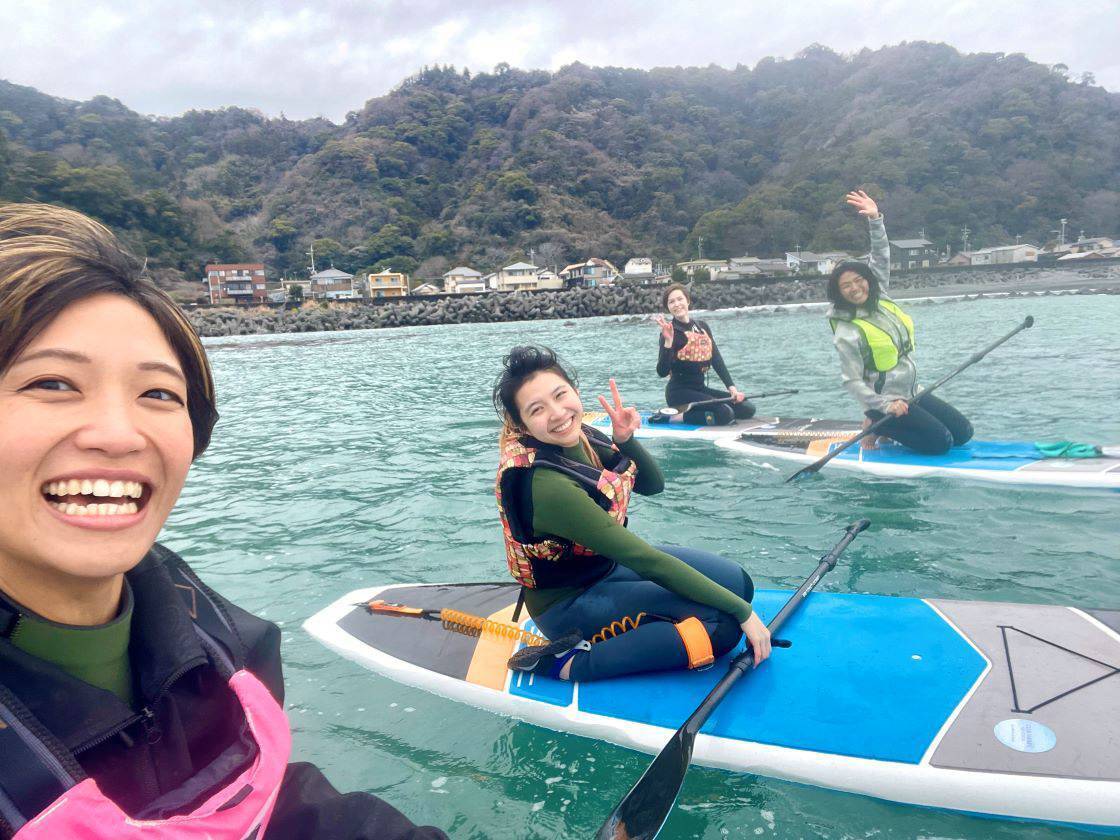
Once I finished my SUP lesson, I returned to Club Sarry’s for a delicious BBQ lunch made with fresh local ingredients.

A Taste of Tea
The last (but not least!) activity on the itinerary was a tea tasting at Moriuchi Tea Farm. I was joined by Robert-Gilles, an English- and French-speaking guide who has lived in Shizuoka for over 40 years and is extremely knowledgeable about Japanese tea and sake. He had many interesting stories to share with me during the taxi ride to the tea farm, and he even took me to a spot with a gorgeous panoramic view of the surrounding hills covered in rows of tea shrubs. I was then introduced to Moriuchi-san, the ninth-generation owner of Moriuchi Tea Farm, who showed me around her tea farm and greenhouse while explaining the different methods of growing tea.
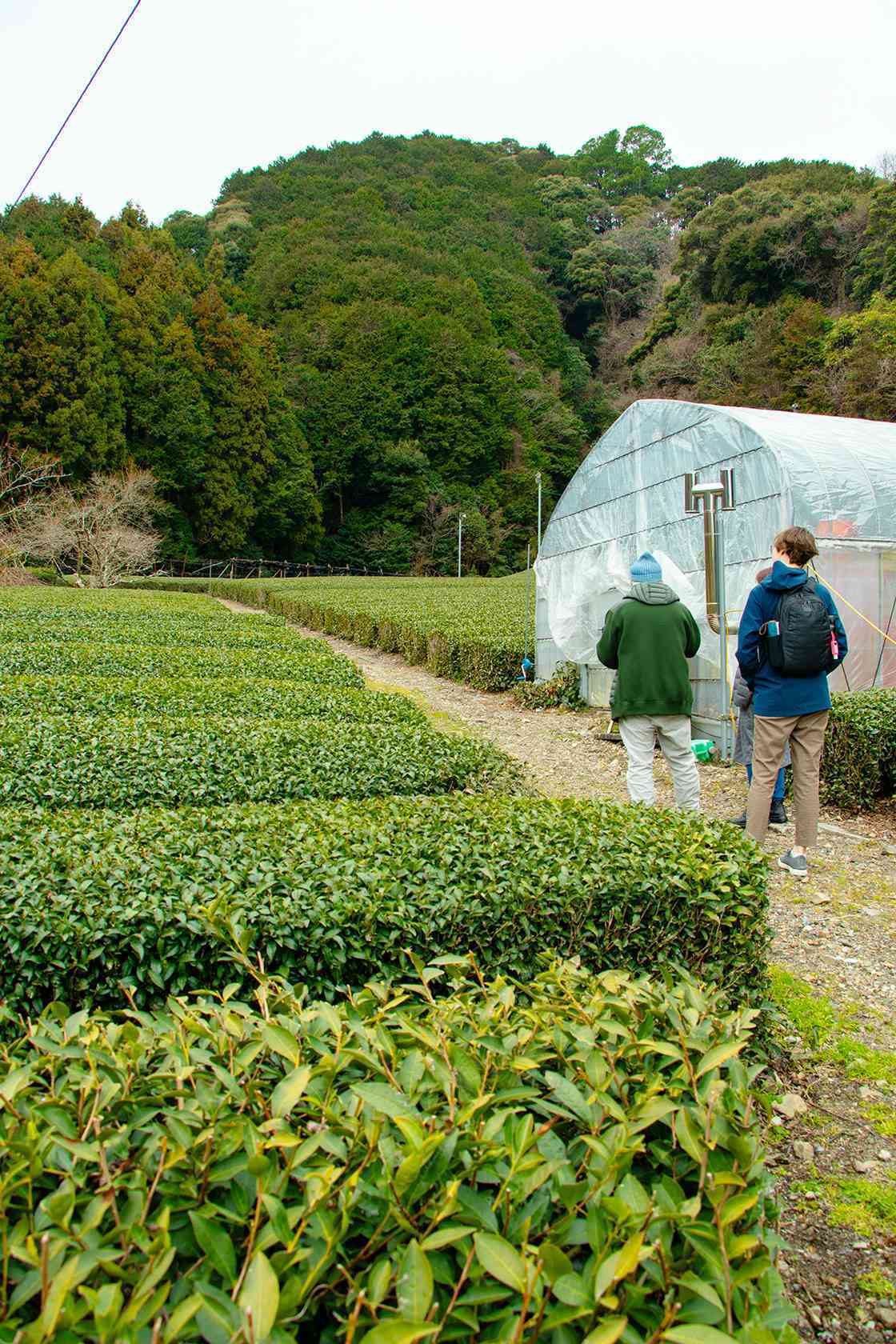
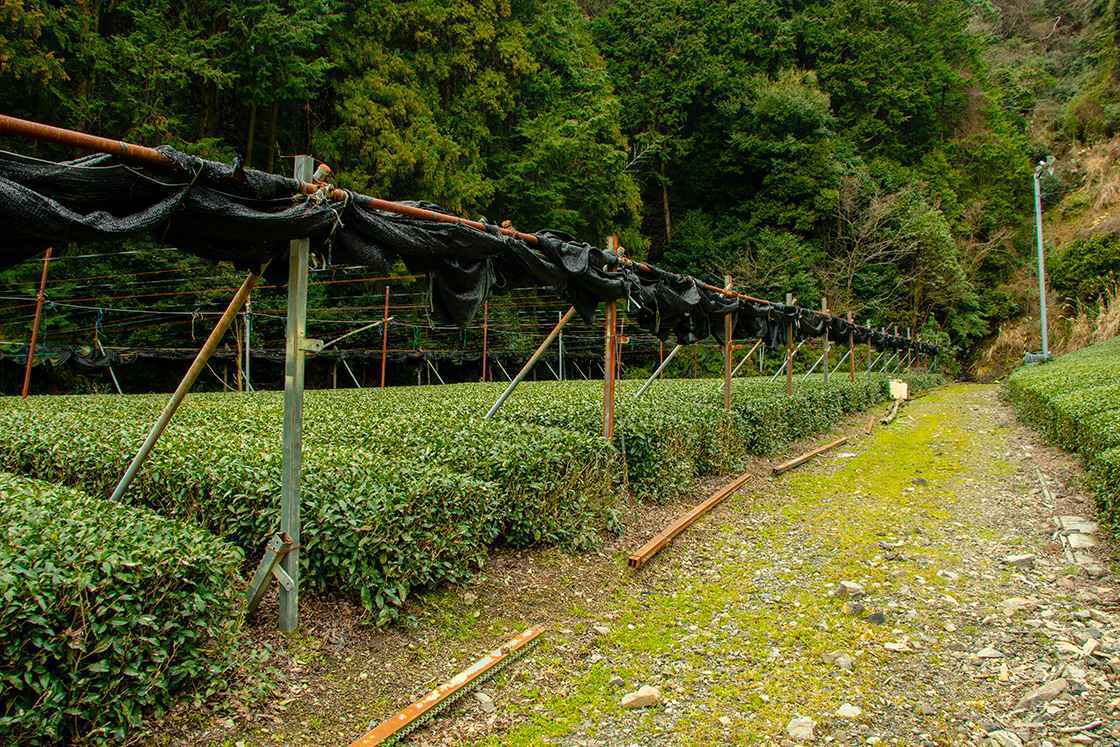
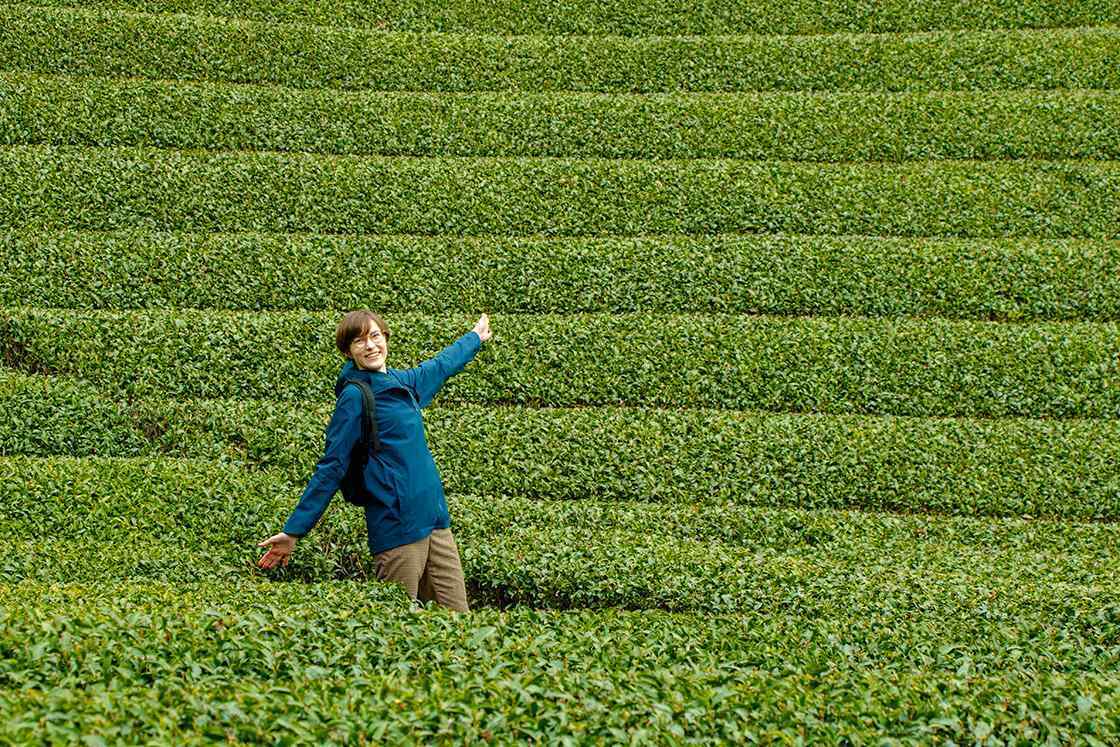
I then traveled to Moriuchi-san’s home, a 150-year-old kominka, where she prepared tea for me. As someone who drinks tea on a regular basis, I was thrilled to learn more about how tea is made and appreciate the subtle differences between the tastes of each variety. There are two types of tea tasting offered. Both involve tasting four varieties of tea, but the first is entirely sencha tea, while the other is tea made from leaves prepared in four different ways. This time, I chose the second one.
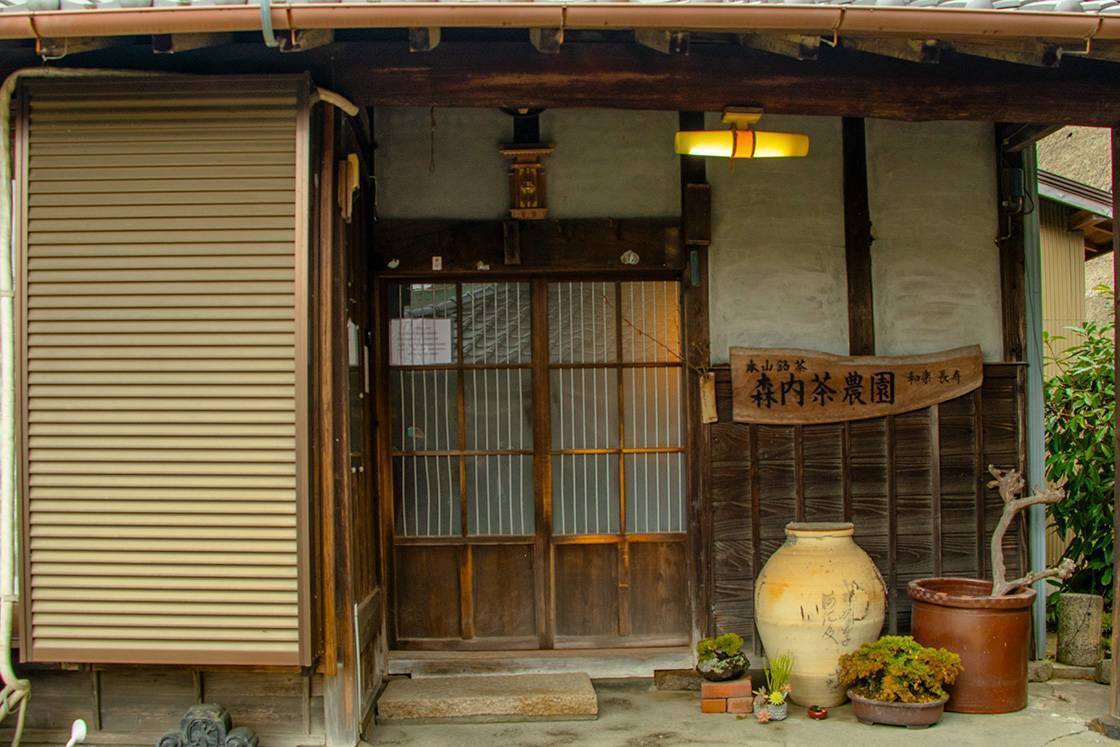
Robert helped explain the process of preparing tea leaves, how the steeping process affects the flavor, etc., for me in English, while including his own observations here and there. There were also translations of the different diagrams and explanations in multiple languages, which were extremely helpful when it came to some of the more specialized vocabulary. It was a very educational experience, and I enjoyed chatting with Robert and Moriuchi-san as I took part in the tasting.
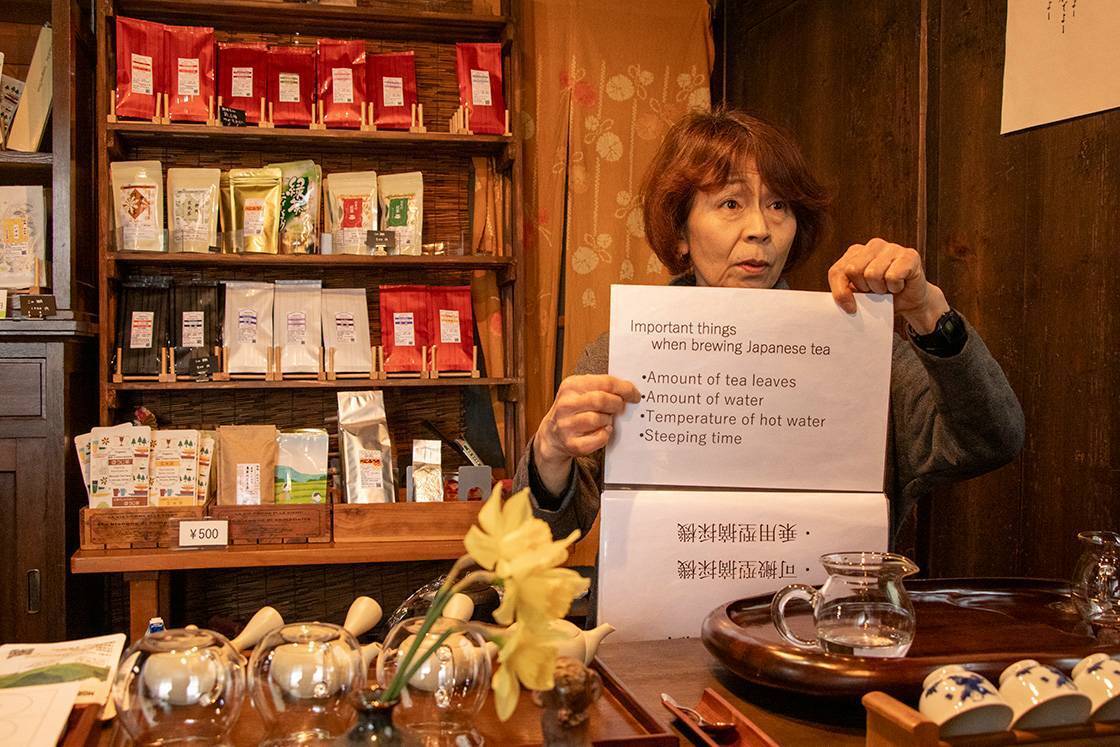
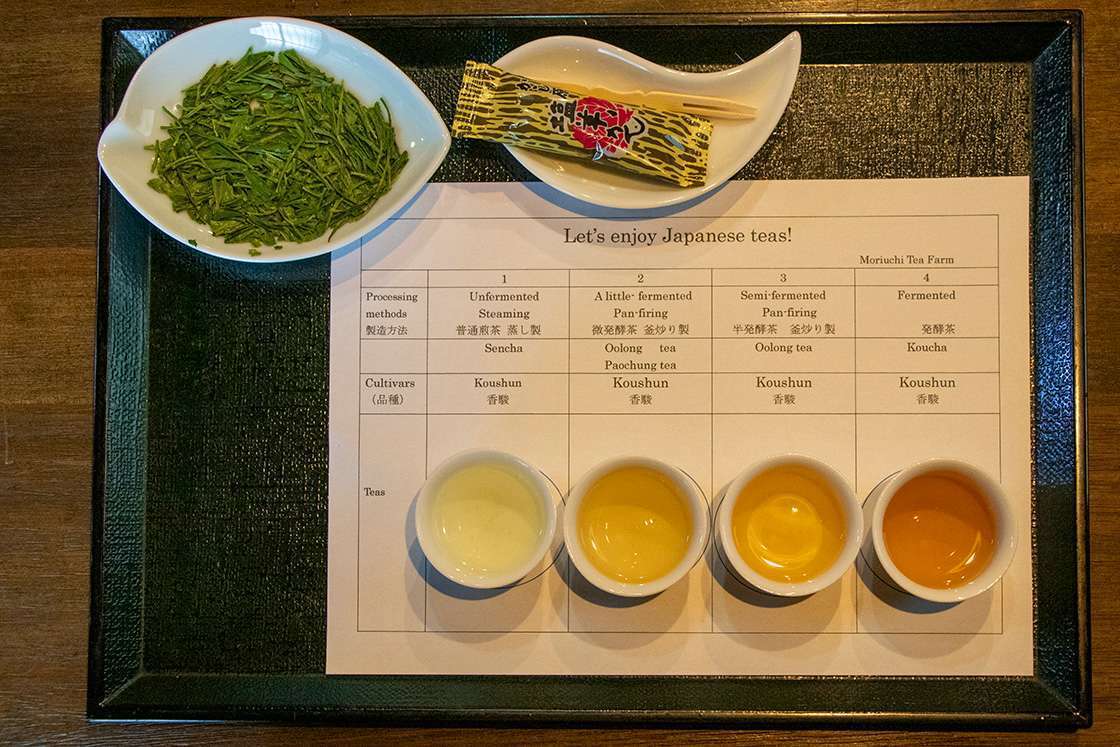
Saying farewell to Moriuchi-san, we traveled by taxi to Shizuoka Station, where I then parted ways with Robert, marking the end of two very satisfying days in Shizuoka.
Closing Thoughts
Being able to enjoy physical exercise while taking in the beautiful scenery, culture, history, and cuisine of Shizuoka was refreshing for both the body and spirit, especially after a long winter spent indoors. My guides, instructors, and hosts were all very friendly and accommodating, which made the experience even more memorable. The next time you visit central Japan, I highly recommend you set aside a couple days to go enjoy Shizuoka as part of this special tour experience.
Links:
JTB Global Marketing & Travel – Tour information on JTBGMT’s official English website
City of Shizuoka – Official English website
Shizuoka Tokaido Town Walker – Official English website of the Shizuoka Tokaido highway
Chojiya – Official English website
Excite Mochimune – Official English website of Mochimune
Nihon Iro Rustic Villa – Official English website
Club Sarry’s Sports & Cafe – Club Sarry’s English webpage on the Excite Mochimune website
Moriuchi Tea Farm – Official English website
